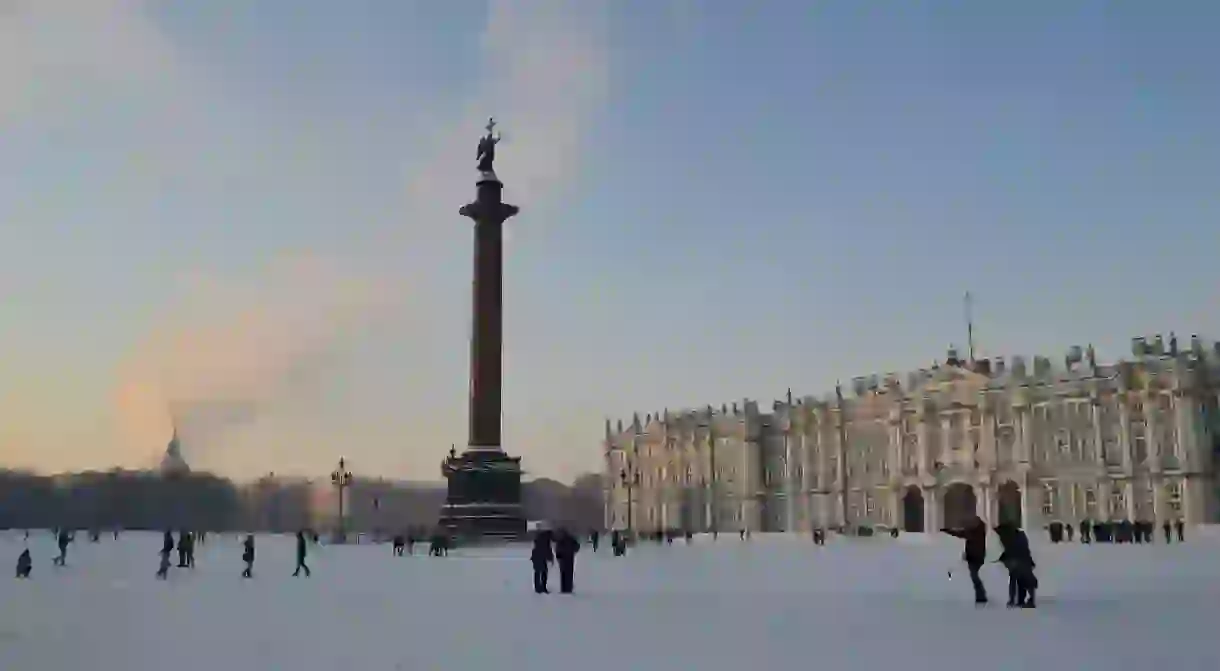5 Books That Bring St. Petersburg To Life

Who has not seen photos of or read about the great city of St Petersburg? Russia’s northern capital is a remarkable place, with its countless embankments, sphinxes, cathedrals, rooftops with stunning views, and museums. You can enumerate them endlessly. It is hard to count how many famous Russian writers walked along the Nevsky Prospekt, and how many heroes of novels lived in ancient buildings in central St Petersburg. This guide has gathered together most famous and enchanting works, including short stories and novels, connected to the history, life and culture of the city of St Petersburg.

Petersburg by Andrei Bely (1931)

At the beginning of the 1905 Revolution, a secret terrorist organization requires Nikolai Ableukhov to kill his own father, the prominent dignitary Apollon Ableukhov. Nikolai gave the fatal promise in a moment of despair; he hesitates, and is in no hurry to implement it. The agent of the secret police threatens him with imprisonment if he does not complete his mission. Ableukhov refuses to participate, and soon hears that this task was a mere provocation. The father-son relationship, which was just beginning to build, is hopelessly flawed, since Apollon becomes frustrated with the parricidal man whom he has raised. Nikolai goes to Egypt and visits the Middle East. He returns to Russia only after the death of his parents, surviving the spiritual revolution. Throughout the novel the reader feels the pumped atmosphere before the revolution, the symbolic choice between East and West, and the failure of this choice. With regards to the image of St Petersburg, it is presented as an ephemeral, broken reflection; but not without a human element, with its descriptions of an acutely unhappy moment of family life. Petersburg is considered the great masterpiece of 20th century Russian symbolism.

The White Dove of Cordoba by Dina Rubina (2009)
The protagonist of this novel, Zahar Cordovin, is a respected teacher and adventurer in one life, but a con artist in another – he masterly forges paintings of famous artists and sells them. Despite large earnings, Zahar has problems: his best friend was murdered and he needs to find the killers and take revenge. The book describes how Zahar was born in Ukraine, moved to Jerusalem and studied painting in Leningrad, and against this backdrop the author develops a complex plot. Dina Rubina considers The White Dove of Cordoba to be her best novel. After its initial publication in 2009, the novel quickly attracted the attention of a wide circle of readers because Rubina draws a complex world surrounding the protagonist. The unexpected twists in the course of the story speak for the book’s quality.

Crime and Punishment by Fyodor Dostoevsky (1866)
The plot of Crime and Punishment revolves around Rodion Raskolnikov, who has developed a theory of murder in his head. According to his theory, humanity is divided into those who ‘have the right’, and ‘the loathsome creatures’. Those with the right, such as Napoleon, can commit a crime for the sake of the great future. Raskolnikov is furthermore very poor, he can not pay not only for his education, but for his lodging, too. Raskolnikov commits the premeditated murder of an old money-lender. After the crime Raskolnikov’s life becomes miserable, and he attempts to find meaning in his life, and to justify and evaluate his actions. Dostoevsky colorfully described the deep psychology, existential interpretation of the murder and the continued existence of Raskolnikov. This classic Russian novel touches the social and psychological causes of crimes, and the moral contradictions, oppressive circumstances, and describes in details the life of the poor of St Petersburg.

The Winter Queen by Boris Akunin (1998)
The noble and fearless twenty year old police detective Erast Fandorin, with the permission of his superiors, starts to investigate the suspicious suicide of a student considered to be part of the ‘golden youth’. The case leads Fandorin to a large underground organization, and he delves into the intricate global conspiracy that will determine the rest of his life. Azazel, also known as The Winter Queen, is a conspiracy and crime book written by the modern Russian writer Boris Akunin. The book is the the novel of a series of extraordinary stories about Erast Fandorin and his adventures. It is captivating, as the main act happens between St Petersburg, Moscow and London, and explores the lives of the modern golden youth, combining descriptive non-fiction elements with fictional characters.

The Nose by Nikolay Gogol (1832-33)
The collegiate assessor Kovalev wants to climb the career ladder, and likes to call himself a major to give himself more confidence. One morning he suddenly wakes up without a nose. He goes to the Chief of Police to declare his loss, but on his way Kovalev unexpectedly meets his own nose embroidered on a gold uniform, the hat of the Privy Adviser and with an épée. Kovalev’s nose jumps into the carriage and travels to Kazan Cathedral for devout pray. Kovalev begs his nose to return; and so begins an exciting chase after his nose. The novel is absurdist and satirical. It was rejected for print by the Moscow Observer journal because it was deemed ‘dirty, banal and trivial’. Gogol’s story was subjected to severe and repeated criticism due to its focus upon how personal image and status can exist without an inner personality. Gogol pokes fun at a society in which high positions and ranks are more desired than a decent personality.
By Valeria Nikonova













